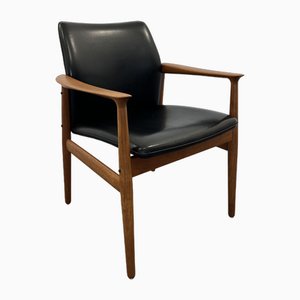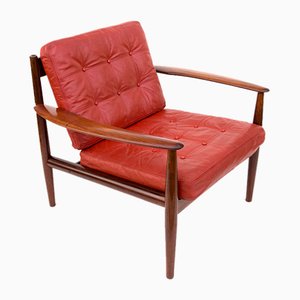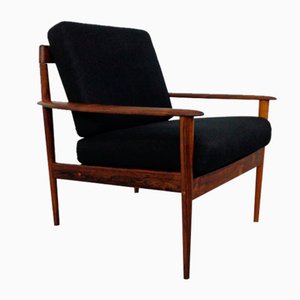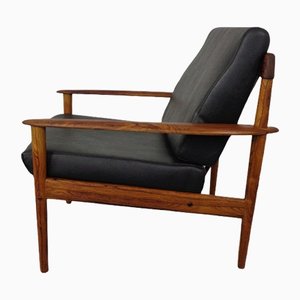
Recognized as an important Danish modernist designer—working at a time when women were a rarity in the design world—Grete Juel Jalk was born in Copenhagen in 1920. She trained in cabinetmaking at Copenhagen's Design School for Women between 1940 and 1942; she went on to complete her education at the Danish Royal Academy under highly influential designer Kaare Klint. In 1946, she won first prize at the annual Cabinetmaker's Guild Competition; five years later, she received wide acclaim for her designs exhibited at the 1951 Milan Triennale.
Around 1953, Jalk opened her own studio and began to develop furniture designs for some of the best known Danish manufacturers, like Poul Jeppesen, Fritz Hansen, Glostrup, and France & Søn. Inspired by the Eameses' and Aaltos' organic, molded furniture, Jalk continuously experimented with new materials and production techniques.
Her iconic GJ Chair—also known as the Shell Chair—for Poul Jeppesen (1963) is a staggering example of postwar design innovation. This teak-veneered, molded plywood piece features a distinct origami-like shape achieved through an intricate bending and laminating process; the complexity of the fabrication in those early years limited its manufacture to only a few hundred. Nevertheless, it was snapped up by New York's Museum of Modern Art the year of its release. In 2009, the GJ Chair went back into production with Danish manufacturer Lange, and, unsurprisingly, the original midcentury editions remain highly sought after on the secondary market.
Jalk is known for her thoughtful designs that are well adapted to users' needs and that embrace societal and technological progress. Through her long career, she gained a reputation in both Denmark and abroad for designs that are economical—both in terms of material and cost—and ideal for the evolving, modern home. In 1947, she created a “self-supporting women’s den” for single, working women, which included an all-in-one sofa bed, storage space, and desk. Her Watch and Listen Unit (1963) was intended to store and display—as opposed to hide—television sets, record players, and stereo systems. Her storage units, coffee tables, and cabinets are typically designed to serve many purposes, just like the multifunctional living rooms in which they were intended. Her minimalist sofas and lounge chairs feature clear yet comfortable forms—perfect for cost-effective mass production.
Beyond her design work, Jalk edited the design magazine Mobilia (1956-62 and 1968-74), as well as the encyclopaedic, four-volume book, Forty Years of Danish Furniture Design (1987). In 1974, the Ministry of Foreign Affairs commissioned Grete Jalk to curate a traveling exhibition on Danish design. Her foldable exhibition space was a huge success in 25 regions. She contributed immeasurably to the international reputation of Danish design, and her work can be found in private and public collections around the world.
Jalk passed away in 2006.






